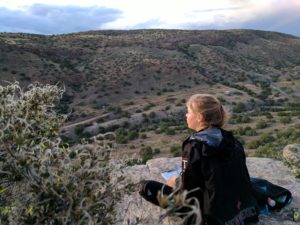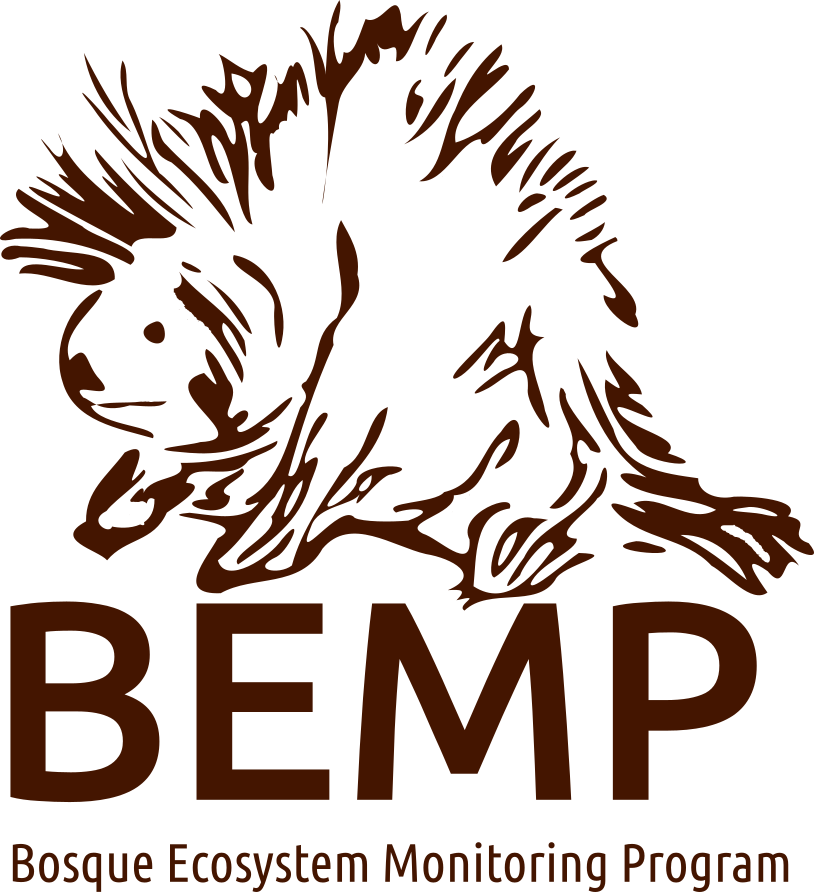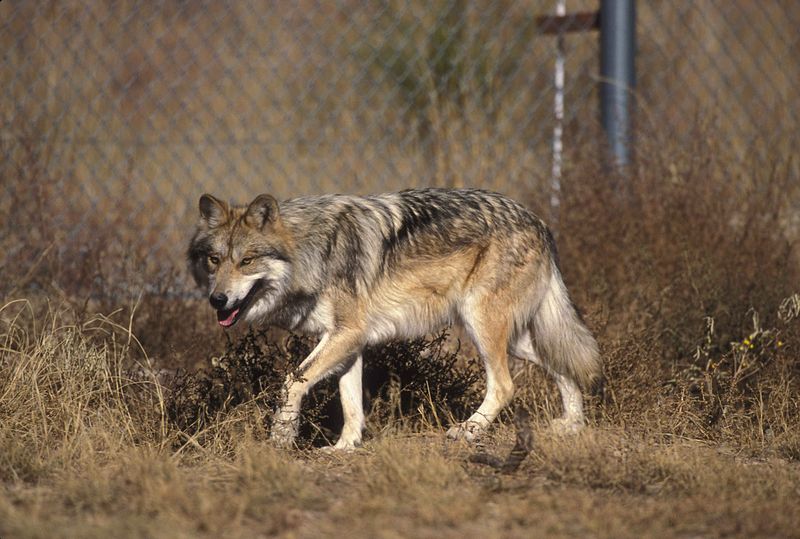
Juli and Glen move an elk carcass into the enclosure
A big part of BEMP’s work is facilitating hands-on and rigorous research opportunities for high school students. At Bosque School, once students take one wildlife biology course, they can elect to do independent studies to further their wildlife research interests. Juli (Bosque School Class of ’18) and Glen (Bosque School Class of’18) have been working hard the last few months developing and studying the effectiveness of enrichment items for captive Mexican gray wolves (Canis lupus baileyi). The Mexican gray wolf is an endangered species native to New Mexico and Arizona. At one point their population was down to only seven individuals!

Placing enrichment items in the holding pens for wolves
The US Fish and Wildlife Service (USFWS) has a program dedicated to the recovery of the Mexican gray wolf, and here in New Mexico they have a pre-release facility at the Sevilleta Wildlife Refuge. The program’s goal is to release wolves into the wild in specific areas of New Mexico and Arizona. These wild wolves often have to wait a while before their release, and they get bored when they are in a cage! Sometimes when wolves are in a cage they spend a lot of time pacing which is a sign of stress.

Juli records observations of wolf behavior in the setting sun
With guidance from the USFWS, Juli and Glen are trying to add enrichment items into the wolves’ pens, such as road-killed elk carcass, bones, and buried meat with a blood trail leading to it. The students want to see if these items will engage and reduce stress for the captive wolves. Juli and Glen have worked hard preparing these enrichment items and diligently observe the wolves while perched on the cliff of a canyon above the pens. They record wolf behavior to see if the wolves are reacting to the enrichment items. The students have also installed motion sensor cameras in the pens to record the wolf behavior at night and when no one is there to observe. Glen and Juli will compile their data and present it in poster-format for the 2018 Joint Annual Meeting of the Arizona/New Mexico American Fisheries Society and the Arizona and New Mexico Wildlife Society. Stay tuned for the results of their study!
Blog Post by Katie Elder, BEMP High School Programs Educator
Featured image: Mexican Gray Wolf, Wikimedia Commons

